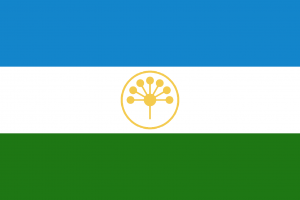Language/Bashkir/Grammar/Plural-Nouns
Introduction
Congratulations on reaching the "Plurals and Articles" lesson in the Complete 0 to A1 Bashkir Course! In this lesson, we will dive into the interesting and unique world of plural nouns in Bashkir.
You may be wondering, what makes plural nouns in Bashkir unique? Well, you'll soon find out that Bashkir plurals have their own set of rules that distinguish them from English plurals. But don't worry, we'll guide you through the rules step by step and provide you with plenty of examples.
By the end of this lesson, you'll be able to form Bashkir plural nouns with ease and use them accurately in sentences. So, let's get started!
Basic Plural Rules
In Bashkir, there are two basic ways to form plural nouns:
1. Add a suffix to the end of the noun 2. Change the root of the noun
Let's take a look at each of these methods in more detail.
Adding a Suffix
The most common way to form plurals in Bashkir is by adding a suffix to the singular form of the noun. The suffix used depends on the last letter or sound of the noun.
Here are the most common suffixes used for Bashkir plural nouns:
| Last letter or sound of the noun | Suffix | Example |
|---|---|---|
| а, я | -лар | ябыҡ - ябыҡлар (apple - apples) |
| б, в, г, д, ж, з, к, м, н, п, р, с, т | -дар | тел - телдәр (word - words) |
| ҡ, ч, ф, х | -тар | ҡуш - ҡуштар (bird - birds) |
| й, л, м, н, ң, р, с, ш, jу | -лар | йөрәк - йөрәкләр (leaf - leaves) |
As you can see, the suffix used depends on the last letter or sound of the noun. It's important to note that some nouns may have irregular plural forms that don't follow these rules.
Let's work through some examples:
- китап (kitap) - book
- китаплар (kitaplar) - books
In this example, we add the suffix -лар to the end of китап (kitap) to create китаплар (kitaplar), the plural form of "book".
- машина (mashina) - car
- машиналар (mashinalar) - cars
In this example, we add the suffix -лар to the end of машина (mashina) to create машиналар (mashinalar), the plural form of "car".
Changing the Root
The second way to form plurals in Bashkir is by changing the root of the noun. This method is less common than adding a suffix, but it's still important to know.
Here are some examples of nouns that form their plural by changing their root:
- балыҡ (balyq) - fish
- балыт (balyt) - fishes
In this example, we change the root from балыҡ (balyq) to балыт (balyt) to create the plural form of "fish".
- күзет (küzet) - spoon
- күздәр (küzdär) - spoons
In this example, we change the root from күзет (küzet) to күздәр (küzdär) to create the plural form of "spoon".
Remember that while changing the root is less common than adding a suffix, it's still an important part of forming plurals in Bashkir.
Noun Gender
In Bashkir, just like in many other languages, nouns have gender. There are three genders in Bashkir: masculine, feminine, and neuter. It's important to know the gender of a noun when forming its plural, as the plural suffix used may vary depending on the gender of the noun.
Here are some examples of masculine, feminine, and neuter nouns in Bashkir:
- masculine: китап (kitap) - book
- feminine: торап (torap) - plant
- neuter: теңеш (teñeş) - fire
When forming the plural of these nouns, we need to use the appropriate suffix based on the gender of the noun.
- masculine: китаплар (kitaplar) - books
- feminine: тораптар (toraptar) - plants
- neuter: теңештәр (teñeştär) - fires
As you can see, the masculine, feminine, and neuter suffixes are different. When forming Bashkir plurals, it's important to keep the gender of the noun in mind.
Practice Makes Perfect
Now that you know the basic rules of forming plurals in Bashkir, it's time to put your knowledge into practice. Here are some common nouns in Bashkir. Try to form their plural forms using the rules we've learned so far:
- кудык (kudyk) - goat
- тор (tor) - mountain
- сүлейман (süleyman) - name
- терезе (tereze) - window
- килеү (kileü) - bird
Take a moment to form the plural forms of these nouns before reading ahead for the answers.
Here are the plural forms of the nouns:
- кудыктар (kudyktar) - goats
- торлар (torlar) - mountains
- сүлеймәндәр (süleymänder) - names
- терезәләр (terezälär) - windows
- килеүтәр (kileütär) - birds
How did you do? With enough practice, forming Bashkir plural nouns will become second nature to you.
Conclusion
Congratulations, you've successfully learned how to form plural nouns in Bashkir! Remember, there are two basic ways to form plurals in Bashkir: adding a suffix or changing the root. Additionally, keep in mind the gender of the noun when forming its plural form.
Now that you've learned how to form Bashkir plurals, you can start using them in your conversations and writing. Practice, practice, practice, and before you know it, you'll be speaking Bashkir like a pro!
Other Lessons
- Common Prepositions
- Definite and Indefinite Articles
- How to Use Have
- Negation
- Basic Adjectives
- 0 to A1 Course
- Personal Pronouns
- Present Tense
- Conjunctions

